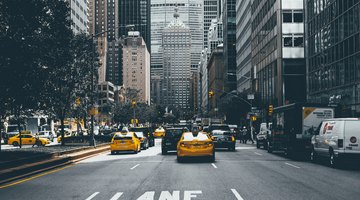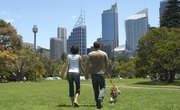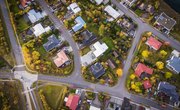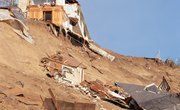Usually, the goal of urban development is to create thriving centralized areas that provide employment opportunities and housing while reducing commuting needs. Urban development also yields access to local entertainment and a sense of community. On the other hand, the centralization caused by urban development may increase traffic congestion and noise, lead to higher crime rates and force poorer residents out of their homes. And when it fails, urban development may result in urban decay, a phenomenon whereby a portion of a city falls into disrepair.
Tip
Urban development may bring new business and breathe life into existing businesses. While some initiatives prioritize restoring old buildings and integrating housing options, others tend to disenfranchise tenants and promote crime. When it comes to transportation, urban development positions businesses close to each other so that residents can walk, but increasing populations also yield congestion.
Urban Economics
Developing urban areas often results in an influx of new businesses and increased patronage of existing establishments. Businesses follow population growth, especially in urban areas. For example, if a company builds or renovates a structure that houses a large number of employees, this may encourage new restaurants to move into the area to feed the company’s employees. The success of those restaurants then encourages other types of businesses, such as dry cleaners, an automotive repair shop, a grocery and a drug store to consider moving to this location. As a result, the city’s economy grows.
Transportation Considerations
On one hand, placing many businesses in one location creates a pedestrian environment and reduces the need for cars. Compared to rural areas and suburbs, where distance often inhibits walking from one location to the next, urban development positions business in close proximity to each other. However, cities like New York are famous for bumper-to-bumper traffic since too many people crowded in small urban areas creates traffic congestion. Public transportation plays a major role in the success of many urban development areas.
Building Restoration
Restoring crumbling or abandoned buildings and adding new structures can breathe life into what was once a dead and empty area. Abandoned buildings provide environments for criminal activity, such as drug use. If crime is not sufficiently contained, consumers will not visit these urban areas, and business owners will close up shop and move to safer areas in the suburbs. This exodus is a driving factor behind urban decay.
Residential Housing
In some instances, urban development disenfranchises tenants from their homes. These are often low-income residents forced to move to another location as a result of inflating prices or shuttered apartment buildings. Many displaced tenants find that the new location does not provide the convenient transportation they once enjoyed. On the other hand, some urban development programs include rebuilding existing low-income housing and incorporating it with mid-income housing. Of course, urban areas are prime locations for housing and are generally more expensive than housing in a rural or suburban areas.
Quality of Life
The quality of life provided by urban development varies from person to person. For instance, some urban dwellers enjoy the excitement of city life as well as living in close proximity to stores, museums and bars. They may also enjoy the variety of people they regularly come in contact with. However, other residents may equate city living with noise, crime and chaos and prefer the expansiveness of suburban living.
Related Articles
References
Writer Bio
Terri Williams began writing professionally in 1997, working with a large nonprofit organization. Her articles have appeared in various online publications including Yahoo, USA Today, U.S. News & World Report University Directory, and the Center for Digital Ethics and Policy at Loyola University Chicago. Williams has a Bachelor of Arts in English from the University of Alabama at Birmingham.











